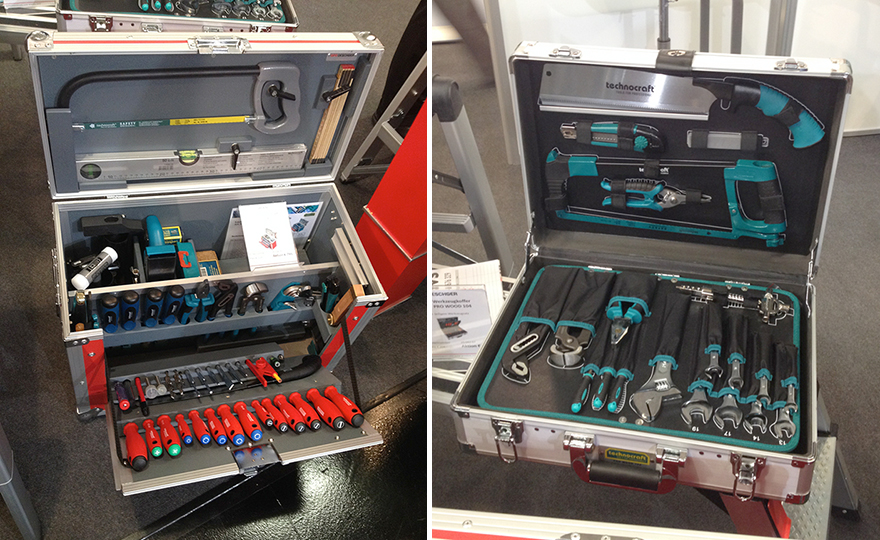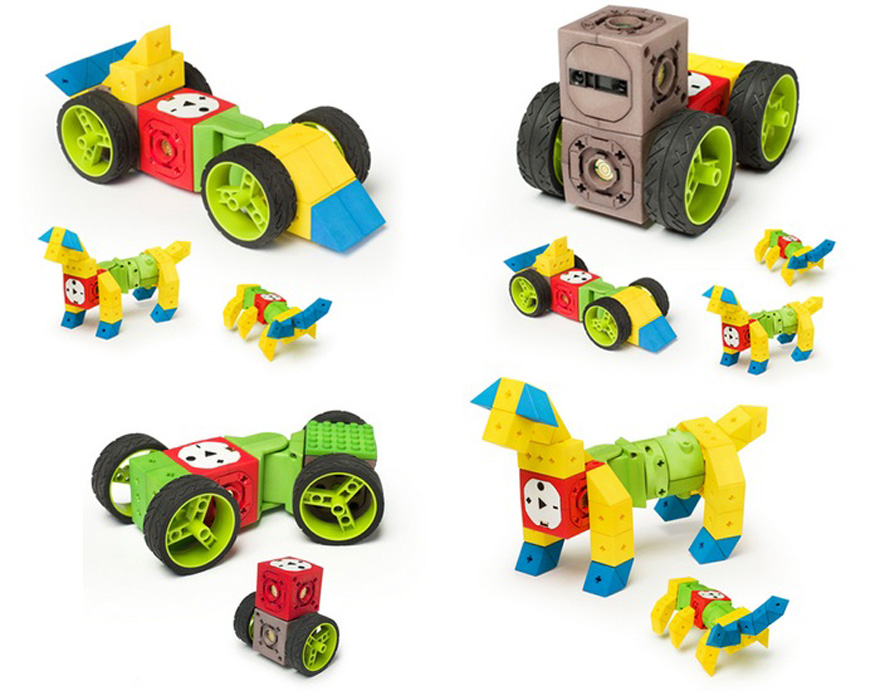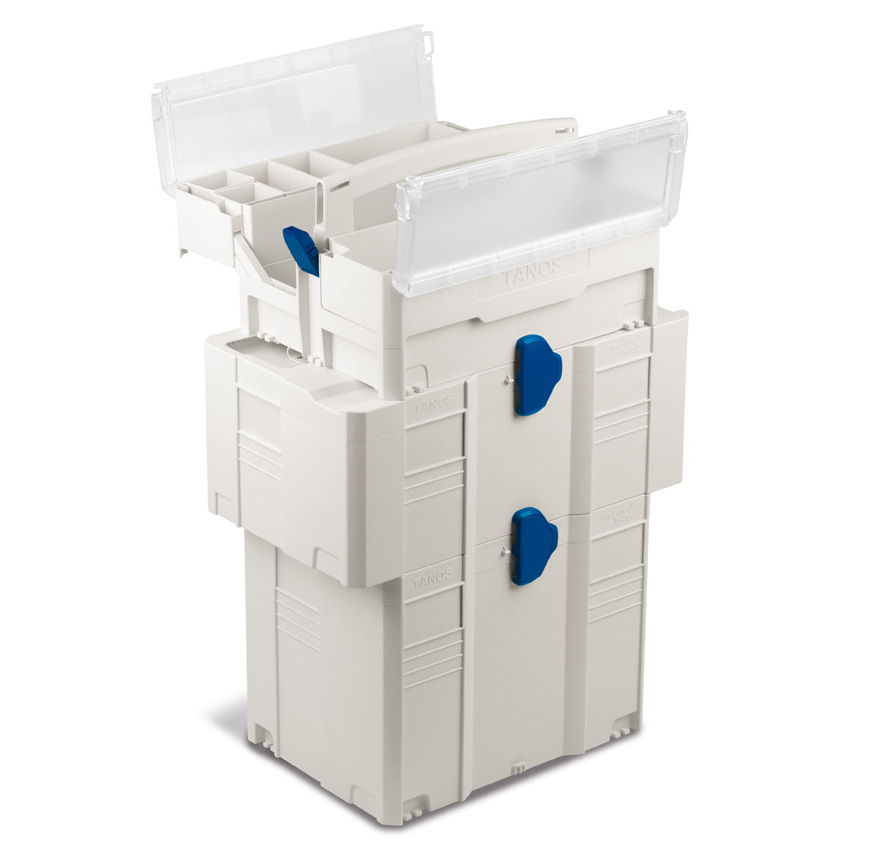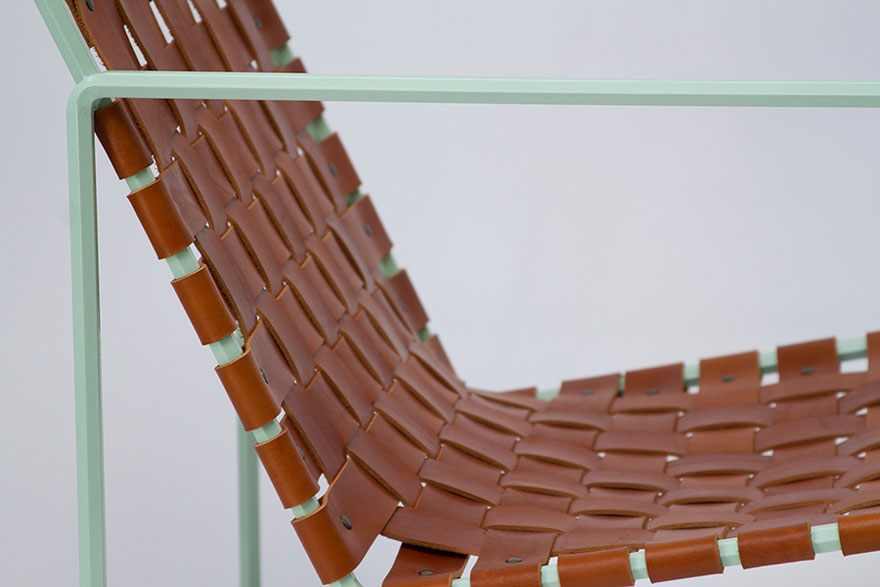![EricTrine-QA-3.jpg]()
This is the latest installment of our Core77 Questionnaire. Previously, we talked to Inga Sempé.
Name:Eric Trine
Occupation: Artist and designer
Location: Long Beach, California
Current projects: Right now I'm gearing up for New York Design Week. I'm doing a new version of my Rod+Weave chair with a brass-plated frame and dyed-blue leather—it will be like an Yves Klein blue, super-vibrant. And then I'm working on a collaboration with a fashion designer and illustrator named Ellen Van Dusen; she's making the fabric for a new chair that's in the works.
Mission: Taking the pretentiousness away from high design and making it more accessible to a broader audience. And also just being in people's homes with the work that I do—the mission is not to be in a design gallery or the MoMA gift shop but to actually get into people's living spaces.
![EricTrine-QA-2.jpg]() Above right: Octahedron Pedestals in a spectrum of colors. Top image: a detail view of Trine's Rod+Weave chair
Above right: Octahedron Pedestals in a spectrum of colors. Top image: a detail view of Trine's Rod+Weave chair
![EricTrine-QA-1.jpg]() A lounge chair and leather-sling side table from Staycation, a recent collection by Trine and Will Bryant
A lounge chair and leather-sling side table from Staycation, a recent collection by Trine and Will Bryant
When did you decide that you wanted to be a designer? When I started transitioning out of a fine-arts, sculptural practice and started making things for myself. About five and a half years ago, my wife and I got married and moved into our first place. I've always had "maker's chops," so I taught myself how to weld and I started making all the furniture for our place. That turned into making stuff for friends, and then it was friends of friends of friends. It just kept snowballing. And I recognized that there was something in me that was activated through more of a design practice than a fine-arts practice. But I'm still realizing that I want to be a designer; I'm still figuring it out.
Education: I got a B.F.A. in interdisciplinary art, and my thesis was sculptural—I made this house on hinges and wheels that could fold into 434 different positions. So even in undergrad I was talking about themes of the home.
Then for graduate school I went to the Pacific Northwest College of Art, in Portland. The program was called Applied Craft and Design. I was looking at schools that were in between industrial design and a traditional M.F.A.. I know I don't want to be a craftsman, and I don't want to be a fine artist. Design is somehow hovering in between those spaces; it can pull from each of those traditions, but it has, I think, a clearer set of criteria.
First design job: Upon leaving graduate school last year, I've been doing my own thing. So my first design job was basically running my own business as a designer.
Who is your design hero? Russel Wright. I discovered him completely by accident. I found a set of four folding chairs that he did for Sears in the 1940s or '50s. I got them for $15 each and I posted them on my blog, and someone was like, "Where did you find those Russel Wright chairs?" And I was like, "Who the heck is Russel Wright?"
So I looked him up and then continued to study his work. He's my hero because he had a strong connection to the consumer culture and broader culture of his time. The dinnerware that he designed in 1937 is still the best-selling dinnerware set in American history. It's called American Modern. Nailing that design and making it so amazing and successful and accessible that it was literally in every home in America—I love that.
He also wrote this book with his wife called A Guide to Easier Living, talking about the benefits of modern design in an almost theoretical or conceptual way. One whole page is dedicated to a quicker way to making your bed. So design for him was really connected to improving your life, and not improving it in a status kind of way but actually improving the way that you interact with your space.
![EricTrine-QA-4.jpg]() Inside Trine's studio in Long Beach
Inside Trine's studio in Long Beach
(more...)![]()

 The solar cells and fan on top of the parasol
The solar cells and fan on top of the parasol








 Above: the Pyramid shelving unit for Ishamaru (1968). Top image: Kuramata's How High the Moon chair for Vitra (1986)
Above: the Pyramid shelving unit for Ishamaru (1968). Top image: Kuramata's How High the Moon chair for Vitra (1986) Left: the Glass chair (1976). Right: an interior for the Issey Miyake store in Ginza, Tokyo (1983)
Left: the Glass chair (1976). Right: an interior for the Issey Miyake store in Ginza, Tokyo (1983) 

 Photos courtesy of ECAL / Axel Crettenand & Sylvain Aebischer
Photos courtesy of ECAL / Axel Crettenand & Sylvain Aebischer






 Above right:
Above right:  A lounge chair and leather-sling side table from
A lounge chair and leather-sling side table from  Inside Trine's studio in Long Beach
Inside Trine's studio in Long Beach























